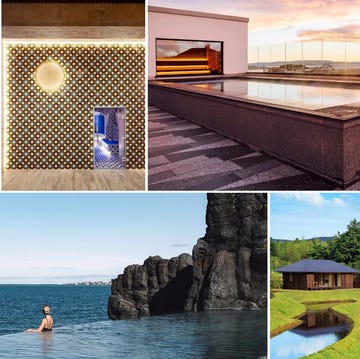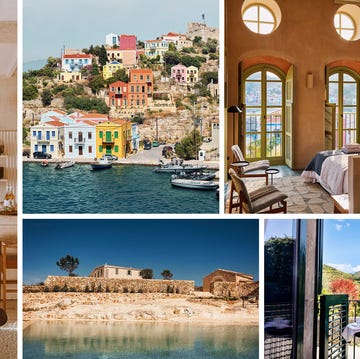It takes at least a day from anywhere in the U.S. to get to the just-opened Nay Palad Hideaway, on the secluded surfer island of Siargao in the Philippines. That doesn’t include the 40-minute ride in the resort’s jeepney from the airport. Once there, guests find themselves surrounded by pristine white-sand beaches and mangrove forests, with the legendary Cloud 9 surf break just minutes away. Travelers are craving this kind of experience—vacations that allow, or even force, a break from the constant pings and updates of technology and, as a result, foster a connection to both the environment and local culture.
Thirty years ago, Explora opened a property in the wilds of Chilean Patagonia with the goal of combining a remote resort experience with a commitment to conservation. The company now boasts seven properties in South America, including one on Easter Island. Its latest is El Chaltén, a sleek 20-room lodge located on the bank of the Electrico River, with views of the Marconi Glacier in Argentinian Patagonia.
The new Ulum Moab in Utah, which is modeled on safari lodgings, launched in spring 2024 with suite-style tents surrounded by the Moab desert’s red-rock landscapes, offering that otherworldly feeling without the long-haul flight. At the mountain property Briol, located in the Italian Dolomites, the best way to arrive is to hike in from the nearest village, which takes about an hour and a half. (Baggage delivery is arranged by the hotel.)
And you can count on the Scandinavians to take mountain huts to new heights, hiring famous architects to design isolated cabins for nature lovers. In Norway, the place to visit is the Bolder, which features private wood-and-glass lodges created by the renowned studio Snøhetta that are perched on the edge of a fjord.
Sometimes, going off the grid is about experiencing not just the luxury of pristine natural landscapes but also the cultures and communities that surround them. Thierry Teyssier, the French hospitality visionary who founded Dar Ahlam on the edge of the Moroccan Sahara two decades ago, more recently, in 2018, launched 700,000 Heures, a “wandering hotel” that opens every six to eight months in a different destination, such as near the Lençóis dunes in northeastern Brazil. Working from the idea that tourism should benefit and support traditional communities, he partnered in 2020 with the nonprofit organization Global Heritage Fund to revive the ancient village of Tiskmoudine in southern Morocco and turn it into an experiential “regenerative hospitality” project.
In addition to welcoming guests, the initiative supports local artisans and offers workshops for children and vocational training. There is no electricity or WiFi here; instead, those who make the journey will dine by candlelight and feel transported to another time.
This article was originally featured in the June/July 2023 Issue of Harper’s Bazaar
















